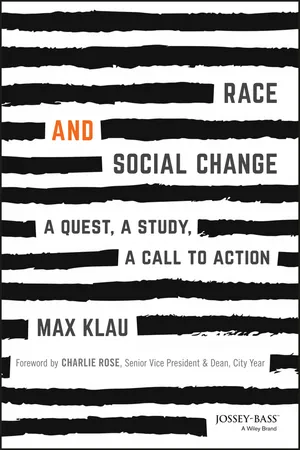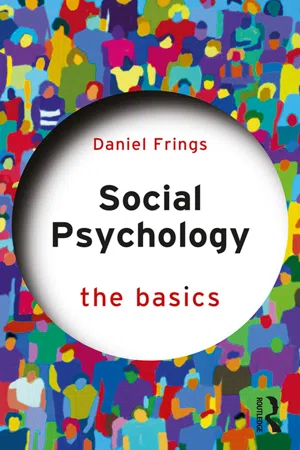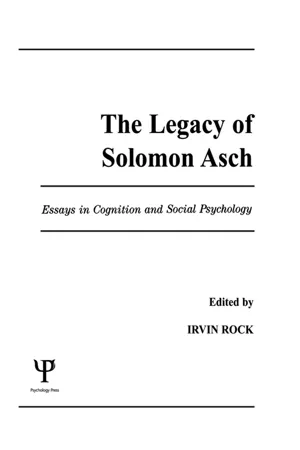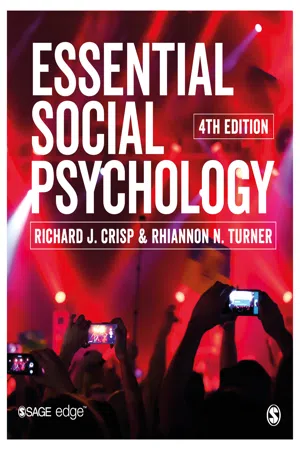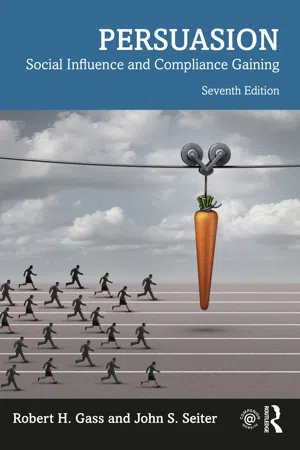Psychology
Solomon Asch
Solomon Asch was a pioneering social psychologist known for his influential experiments on conformity. His research demonstrated the power of social pressure in shaping individual behavior and decision-making. Asch's work highlighted the tendency for people to conform to group opinions, even when those opinions were clearly incorrect, and it continues to be a foundational concept in the study of social influence.
Written by Perlego with AI-assistance
Related key terms
10 Key excerpts on "Solomon Asch"
- eBook - ePub
Psychoanalysis, Classic Social Psychology and Moral Living
Let the Conversation Begin
- Paul Marcus(Author)
- 2019(Publication Date)
- Routledge(Publisher)
Seder (a ritual service and ceremonial dinner for the first night in Israel or first two nights of Passover in the diaspora). He saw his grandmother pour an extra glass of wine in a ceremonial cup and asked whom it was for. “For the prophet Elijah” (who heralds the messiah), an uncle told him. “Will he really take a sip?” the little boy asked. “Oh, yes—you just watch when the time comes,” the uncle replied. Excited with the sense of suggestion and expectation, Asch was convinced that he “saw the level of wine in the cup drop just a bit.” It was this experience that sensitized him to the power of social pressure and conformity (Stout, 1996, n.p.).Asch thus orchestrated an elegantly simple experiment to explore the extent to which social pressure from a majority group could influence a person to conform.1 In social psychology, conformity is defined as “the convergence of individual’s thoughts, feelings, or behavior toward a group norm” (Smith et al., 2015, p. 315). The original study, along with select follow-up studies, are summarized herein.Asch used fifty male students from Swarthmore College to participate in a “‘psychological experiment’ in visual judgment” (Asch, 1955, p. 32). Using a line judgment task, Asch situated a naïve subject (the “real” participant) in a room with seven confederates, whom had consented, prior to the line task presentation, to what their responses would be. The naïve subject was not aware of this and was made to believe that the seven confederates were real participants like they were. Each person in the room had to articulate aloud which comparison line on the large white cards (A, B or C) was most similar to the standard line. The correct answer was always entirely obvious. The naïve subject sat at the end of the row of chairs and provided his or her answer last. There were 18 trials altogether, and the confederates gave the incorrect answer on 12 trials (i.e., the “critical trials”). Asch wanted to discern if the naïve subject would conform to the view of the majority. He also had a control condition that excluded any naïve subjects, only real participants. The results were astonishing. About one-third of the naïve subjects acquiesced and conformed to the obviously incorrect majority on the critical trials. Moreover, during the critical trials, about three-quarters of naïve subjects conformed on at least one occasion and one-quarter never conformed. In the control group, less than 1% of the naïve subjects gave the incorrect answer (Asch, 1951; McLeod, 2008). - eBook - ePub
Race and Social Change
A Quest, A Study, A Call to Action
- Max Klau(Author)
- 2017(Publication Date)
- Jossey-Bass(Publisher)
Still, the Milgram experiment endures as an infamous and iconic undertaking in the history of the social sciences. To this day, it challenges us to think deeply about our own tendencies to obey authorities even when confronted with demands that fly in the face of our own moral code and ethical standards.Solomon Asch's Conformity Experiments
In the early 1950s, social psychologist Solomon Asch (1951) set out to explore the dynamics of conformity. Similar to Milgram, he felt compelled to understand the powerful ways that ordinary individuals are influenced by their interpersonal relationships—in this case, with peers:Our immediate object was to study the social and personal conditions that induce individuals to resist or yield to group pressures when the latter are perceived to be contrary to fact. The issues which this problem raises are of obvious consequence for society; it can be of decisive importance whether or not a group will, under certain conditions, submit to existing pressures. (p. 177)In his experiment, Asch gathered a group of eight individuals and asked them to take a simple perceptual test. In this case, the task was to view flashcards presenting a series of lines; participants were asked to identify which of the last three lines of various lengths perfectly matched the length of the first line on each flashcard. The subject of the experiment was unaware, however, that all seven of the other individuals involved were actually collaborators who were part of the experiment. On multiple occasions, the seven individuals unanimously asserted that a line that was clearly too long or too short was the line that matched the length of the first line. The subject was then placed in the position of having to either deviate from the group by saying what he or she perceived to be the correct answer or make the choice to ignore the evidence of his or her own senses in order to conform to the group. In his original experiment, Asch found that more than 30% of participants chose to conform to the group, suggesting that roughly one out of every three people would make statements that they did not believe to be true rather than risk standing alone in their responses. - eBook - ePub
Social Psychology
The Basics
- Daniel Frings(Author)
- 2018(Publication Date)
- Routledge(Publisher)
There are a few important features of this study which are worth bearing in mind. First, the situation meant that conformity was very likely. There is no ‘right’ or ‘wrong’ answer in this study, and it was hard for participants to gauge how well they were doing. It’s also interesting to think about the fact that individuals did not solely conform to the view of one other person – instead, Sherif observed a tendency for the group to converge on a group norm. Whether this is conformity or rather some form of group decision-making is unclear. However, what this work did show was that people generate and then adjust their behaviour in line with social norms. As such, it was highly influential and prompted many other researchers to investigate the idea of conformity. Most prominent of the subsequent investigations were perhaps those conducted by Solomon Asch and colleagues (Asch, Solomon & Guetzkow, 1951). The Asch paradigm The Asch paradigm was developed to demonstrate conformity in situations where the right and wrong answers were unambiguous. Asch had participants look at three lines of (obviously) different lengths. The participants’ task was to say which line was the same length as a fourth target line. When asked to do this task alone, participants’ accuracy rate was greater than 99 per cent – all participants got the task right almost all the time. However, the purpose of the experiment was to see what would happen when an individual participant was faced with several other participants who gave a clearly wrong answer. In reality, all but one of the participants in every run of the experiment were confederates – effectively acting as stooges who were trained to give the same (wrong) answer in 12 specific trials (out of 18 trials in total). In each trial, the participant was asked to give their answer after hearing the wrong responses of the confederates - eBook - ePub
The Legacy of Solomon Asch
Essays in Cognition and Social Psychology
- Irvin Rock, Irvin Rock - DECEASED, Irvin Rock, Irvin Rock - DECEASED(Authors)
- 2014(Publication Date)
- Psychology Press(Publisher)
on construal—influences long ago discussed and documented by Solomon Asch.My personal contact, and friendship, with Solomon Asch began in the fall of 1976 when he was beginning a 1-year stay as a fellow at the Center for Study in the Behavioral Sciences. I had just coauthored a paper (Ross, Bierbrauer, & Hoffman, 1976 ) that offered an “attributional analysis” of the classic Asch conformity paradigm, and he graciously invited me to the Center, which was located on a hilltop overlooking the Stanford campus, in order to discuss it. The focus of that initial meeting, as I recall, soon shifted from the narrow concerns of my paper to the current state of social psychology; and, before the afternoon was over, we agreed that we would meet regularly at the Center over the months ahead so that I could bring him up to date on any recent advances in our field—“advances,” he assured me with a twinkle in his eye, that he had “probably missed” during the years he had spent devoting himself anew to problems in perception.Needless to say, I learned a great deal more than I taught during our year-long tutorial. My senior colleague remained unconvinced that the “advances” I heralded—in particular, the fruits of a decade of solid research in attribution theory, and some very recent attempts to pursue more general inferential and judgmental shortcomings—either were particularly new or particularly promising. Meanwhile, I gained a new respect for Asch and for intellectual traditions that my own work, and that of other young social psychologists of my cohort, had drawn upon so heavily without our acknowledgment. This respect was further enhanced when I finally sat down and read Asch’s seminal 1952 text—a work that I had occasionally cited but one which, except for it’s chapter dealing with group influences on judgments, I had never explored in any depth. - Available until 29 Sep |Learn more
- Richard J. Crisp, Rhiannon N. Turner(Authors)
- 2020(Publication Date)
- SAGE Publications Ltd(Publisher)
does not match their private opinion. This is particularly likely to be the case when the context is not one which the perceiver feels uncertain about but where individuals have a clear idea of their own point of view. What happens then when people are exposed to others who do not share their point of view? This question was examined in a famous set of experiments conducted by Solomon Asch.Conformity
From Sherif’s experiment we know that social norms may come into play in uncertain situations (such as ambiguous light movements), but what about when we do have information about the issue at hand and are certain about the correct answer to give? What happens when our private opinion conflicts with the social norm at hand? In such situations the use of a heuristic is not necessary – we do not need to look to others to determine what might be the right answer to give, the right opinion to hold. Under these circumstances would we still expect the social context to exert an influence? While norm development can be seen as a useful and fairly innocuous (possibly beneficial) effect of the presence of other people on our judgements, in some cases the presence of others can lead us to go along with the group norm even though we might not agree with it. Can you remember ever going along with a group at school, perhaps teasing another child, even when you thought it was wrong? Has there ever been a time when, as a student, you have done things you might not have done if you had been on your own? The study we discuss next is all about these types of situation.Asch’s Conformity Experiment
In 1951 Solomon Asch carried out a classic and highly influential experiment on social influence. The task was, on the surface, a ‘visual perception experiment’ but Asch, like Sherif, was interested in something quite different: the effects of others on judgements when the task is easy and there is a mismatch between public and private attitudes. - eBook - ePub
- Nicky Hayes(Author)
- 2017(Publication Date)
- Routledge(Publisher)
It is very easy for any influential and reasonably stable group to slip into groupthink; and the only real way to avoid it is to encourage conscious discussion and debate of alternatives and problems. Janis described how President Kennedy learned from the Bay of Pigs fiasco, and adopted a very different decision-making strategy when the Cuban Missile Crisis came along, encouraging open and free debate and getting his brother, Robert Kennedy, to adopt the role of “devil’s advocate”, criticising other people’s ideas. He also made sure he was absent from meetings from time to time, so that his own views were not too influential. By doing this, his process of decision-making was as far removed from the groupthink problem as he could get it, which many people believe saved the world from nuclear disaster.One of the aspects of human social interaction which makes phenomena like group polarisation and groupthink so likely to happen is the way that we much prefer to agree with one another, rather than challenge and confront. That’s not necessarily a bad thing, in that it helps to keep us social — a species whose main reaction to others was confrontational would not remain social for any length of time! But there are some situations where conformity to others isn’t always the appropriate way to behave.CONFORMITY AND ACQUIESCENCE
In 1951, Asch undertook a series of studies into how people will sometimes conform to others even when they know they are wrong. He recruited people for what was described as an experiment in visual perception, and in the baseline study, organised them so that each of the volunteers was tested in a group of six other people. Unknown to them, the other five were “stooges” — that is, people who were acting as volunteers but really were assistants to the experimenter. The group was asked to undertake a simple line-judging task, stating which of three lines was the shortest. The test was deliberately straightforward, and the correct answer was obvious.For the first few trials, all went as expected. Each member of the group gave their answer in turn — the volunteer was second to last of a group of six. But then the confederates began to give wrong answers, and all of them would give the same wrong answer. The question, therefore, was whether the participant would give the same wrong answer as the rest of the group, or whether they would give the correct answer even though that was, in terms of the group, socially deviant. - eBook - ePub
Persuasion
Social Influence and Compliance Gaining
- Robert H. Gass, John S. Seiter(Authors)
- 2022(Publication Date)
- Routledge(Publisher)
For example, road signs indicate how fast you are permitted to drive and game rules may send you to jail without collecting $200. Some norms, however, are implicit and not so openly stated. For example, we imagine that when you’re a guest in someone’s home, you don’t put your feet on the dinner table even though you’ve never read a rule saying you shouldn’t. Likewise—and this is what the sociology professor told his class—because we all conform to social norms, no one would take his or her clothes off in the middle of a classroom lecture. Of course, our friend, who prides himself on being a nonconformist, couldn’t resist this challenge. The rest is history, and the professor now has a good story to tell whenever he lectures about norms and conformity. In the Beginning: Early Research on Conformity Effects Not everyone is like our friend, the student-stripper in the sociology class. As we’ve noted, in most cases, people know the norms and try to go along with the crowd. Perhaps the most compelling experiment on the effects of conformity was conducted by Solomon Asch (1956). Here’s how his experiment worked: Asch gathered several (seven to nine) college students into a classroom and told them that they would be participating in an experiment about visual judgment. The students were asked to look at two large, white cards. As can be seen in Figure 6.1, a single vertical line appeared on the first card, and three vertical lines, each of different length, appeared on the second card. The students’ task was simple: After observing both cards, they were asked to match lines—that is, each student was asked to report out loud, to the rest of the group, which of the three lines on the second card was the same length as the line on the other card - eBook - ePub
- Frank van Tubergen(Author)
- 2020(Publication Date)
- Routledge(Publisher)
why they conformed to the majority group and gave wrong estimates (Asch, 1956, 1961). Roughly speaking, the participants gave two kinds of answers. One group of subjects answered that they thought they must have misperceived the length of the line in some way, and hence followed the group opinion. Therefore they believed the group was right and their own judgment was wrong. The other group of subjects, however, believed they had it right personally, hence they did not agree with the group. Nevertheless, they conformed to the group judgment—so they adjusted their behavior—because they feared social disapproval when they stated their own opinions publicly.In a follow-up study to the work of Asch, Deutsch and Gerard argued that these two kinds of responses by the subjects of the Asch experiment reflect two mechanisms which can explain positive social influence (Deutsch & Gerard, 1955). First, there is what they call informational social influence , which they defined as “influence to accept information obtained from another as evidence about reality”. Second, there is normative social influence , which is “influence to conform to the positive expectations of another”. This kind of influence is based on the desire to receive social approval from peers, and to avoid social sanctions and punishment from the group when not conforming to the social norms. Thus, in the Asch experiment, subjects who believed they were right and others were wrong might have decided to conform to the beliefs of others and thereby avoid possible negative sanctions of the others in the classroom. In this case, beliefs about reality—factual statements—are normative, i.e., statements in the form of “X is true” are not neutral but normative and not agreeing with them can have social consequences. Sociologists have developed the social control theory around this idea and applied it to numerous social phenomena. In Chapter 6 - eBook - ePub
- Richard Gross, Rob McIlveen(Authors)
- 2016(Publication Date)
- Routledge(Publisher)
Participants in the control group conditions made correct judgements 95 per cent of the time. In contrast, in the presence of unanimous, incorrect judgements, 80 per cent of participants agreed at least once with the incorrect majority. Some 8 per cent of the participants agreed with the incorrect majority all of the time, and on average participants conformed between four and five times on the critical 12 trials. Asch interviewed each participant after the experiment: those who agreed with the majority most of the time gave various reasons for their behaviour. For example, that the group was actually correct, that they did not want to spoil the experimenter’s results, and that they went along with the majority to avoid creating disharmony and conflict. Participants who did not conform gave the following reasons for maintaining independence: confident their judgement was correct, and thinking the majority was correct but could not agree with them since that was not what they saw.The Asch experiments are frequently misrepresented as demonstrating high levels of conformity. Friend, Rafferty and Bramel (1990) draw attention to the fact that in the original study, almost two-thirds of the naïve participants resisted group pressure to conform (Asch, 1951). In spite of this, a review of nearly 100 American Social Psychology texts published between 1953–85, showed that the emphasis was, and continues to be, consistently on the experimental participants who made 37 per cent errors over the 12 critical trials. The critique by Friend et al. (1990) also alerts us to the dilemma as to whether 37 per cent of conforming responses constitutes a high or low level of conformity. Asch had intended to demonstrate independence and was himself surprised by the results. As the correct answer was so obvious, he expected that naïve participants would not be swayed by majority influence (Campbell, 1990).The Asch paradigm is costly in terms of time and the number of confederates needed, and requires good acting from the confederates. Crutchfield (1955) devised an alternative experimental model: he had five participants sit in separate booths, side by side. In front of each participant was a box with lights and switches on it, as shown in Figure 8.4 - eBook - ePub
Social Groups in Action and Interaction
2nd Edition
- Charles Stangor(Author)
- 2015(Publication Date)
- Routledge(Publisher)
which people are likely to conform and which people are not. Even in cases in which the pressure to conform is strong, and in which a large percentage of individuals do conform (such as in Asch’s line-judging research), not everyone does so. There are usually some people willing and able to go against the prevailing norm. In Asch’s study, for instance, 24 percent of the participants never conformed on any of the trials.Personality VariablesSome research has attempted to discover the personality characteristics of individuals who are more or less likely to conform, and some differences have been found. People with lower self-esteem are more likely to conform in comparison to those with higher self-esteem, and people who are dependent on and who have strong needs for approval from others are also more conforming (Bornstein, 1992; Crutchfield, 1955; Snyder & Ickes, 1985). Recent research by Visser and Krosnick (1998) studied the influence of age on conformity and found a curvilinear relationship, such that individuals who are either very young or very old were more easily influenced than individuals who were in their thirties and forties. And, perhaps not surprisingly, people who highly identify with, or who have a high degree of commitment to, the group are also more likely to conform to group norms (Qetten, Spears, & Manstead, 1997; Terry & Hogg, 1996). As we will discuss more fully in Chapter 11 , there are also differences in the amount of conformity observed in different cultures. However, although there are some differences among people in terms of their tendency to conform, research has generally found that the impact of person variables on conformity is smaller than the influence of situational variables, such as the number and unanimity of the majority.Gender Differences in ConformityIn Asch’s study, only men were used. You might ask yourself what might have happened had women been included. In fact, several reviews and meta-analyses of the existing research on conformity in men and women have now been conducted (Eagly & Carli, 1981; Eagly & Chrvala, 1986). The overall conclusions from these studies is that there are only small differences between men and women in the amount of conformity they exhibit, and these differences do not show up in every case. For instance, in a meta-analysis by Alice Eagly (1978), 68 percent of the reviewed studies found no male–female differences. And yet, of the studies that did find differences, 34 percent found that women conformed more than men but only 3 percent found that men conformed more than women. Overall, the difference between men and women was very small.
Index pages curate the most relevant extracts from our library of academic textbooks. They’ve been created using an in-house natural language model (NLM), each adding context and meaning to key research topics.

